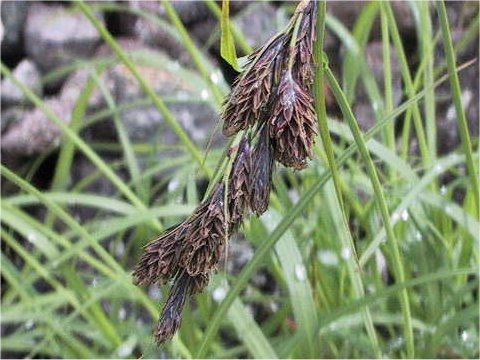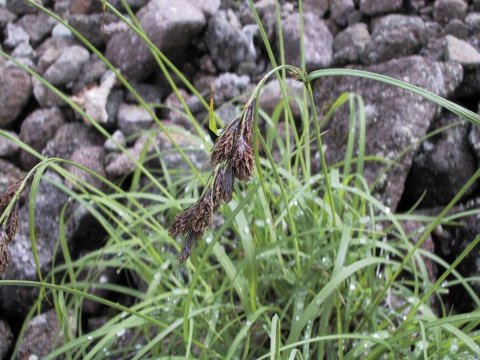 |




|

|
わが国の固有種で、本州の中部地方から東北地方の日本海側に分布しています。高山帯の草地に生え、高さは20~70センチになります。短い根茎があって、根生葉と茎を叢生します。6月から8月ごろ、茎の細い柄の先に黒紫褐色の小穂を垂れ下げます。果胞は細長くて、嘴の先はへこみません。母種の「みやまあしぼそすげ(深山足細菅)」のように果胞に横縞がなく、細長いのが特徴です。別名で「しろうますげ(白馬菅)」とも呼ばれます。
|

|
カヤツリグサ科スゲ属の多年草で、学名は Carex scita var. brevisquama。英名はありません。
|

|
The "Ashiboso-suge" (Carex scita var. brevisquama) belongs to Cyperaceae (the Sedge family). It is a perennial herb that is endemic to Japan and is distributed from the Chubu region to the Sea of Japan side of the Tohoku region of Honshu. It grows in alpine meadows and is 20 to 70 cm tall. It has short rhizomes and produces a cluster of radical leaves and stems. From June to August, small blackish-purple-brown spikelets hang down at the end of the narrow stalks of the stems. The uticles are long and slender, and the tip of the beak is not indented. It is characterized by its long and slender uticles without horizontal stripes like its mother species, "Miyama-ashiboso-suge". It is also known as the "Shirouma-suge" in Japan.
|

|
岐阜県丹生川村池之俣「乗鞍岳」にて、2002年08月17日撮影。
|



